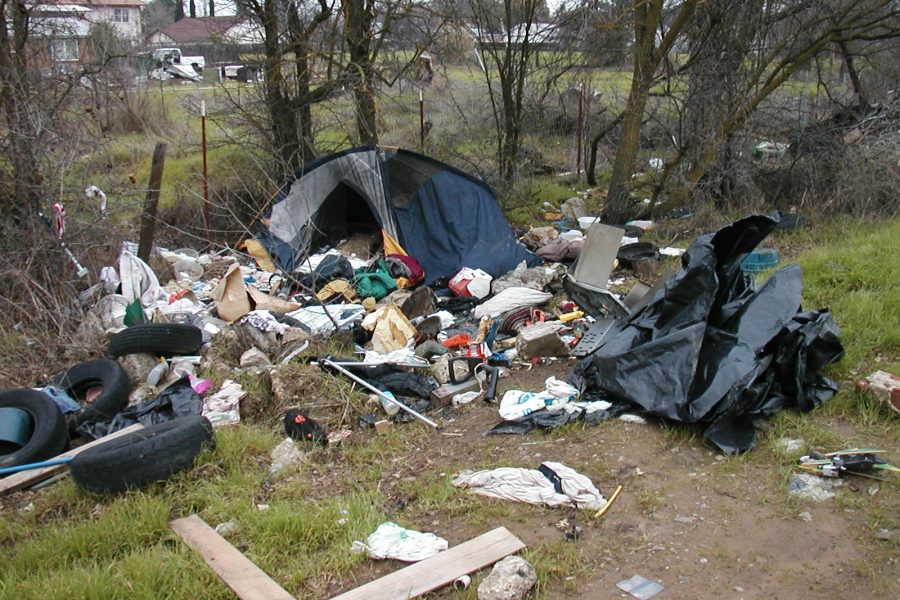It’s no surprise to any resident that, for more than a decade, a disproportionate share of the homeless population has been living in California, and that number continues to grow. We see it every day: on the way to work, dropping our kids off at school, enjoying a nice dinner out.
But after years of the state spending billions of dollars on failed homelessness programs, cities are now taking matters into their own hands with a more forward, and what some are calling, “aggressive” approach.
In response to the increasing public pressure to do something, cities are imposing homeless encampment bans near schools, parks and other community facilities. And these aren’t just your typical smaller, rural, right-leaning cities you would expect. It is left-wing dominated cities such as Los Angeles and Sacramento.
Sacramento County passed an anti-camping ordinance last September citing safety concerns along the American River as reason.
“Not only the increase in campers but the increase in violence, the increase in fires that are both damaging to the parkway and dangerous to those living on the parkway, people who have homes along the parkway as well as the animal life on the parkway,” said Janna Haynes with Sacramento County.
The Los Angeles City Council approved an ordinance to prohibit homeless people from setting up tents within 500 feet of schools and day-care centers last August.
These cities may have taken this approach even further if not for the landmark decision, Martin vs. City of Boise, by the U.S. 9th Circuit Court of Appeals in 2018. City policing powers in the nine western states, including California, are now curbed due to the court’s decision that it is unconstitutional to punish people for sleeping on the sidewalk when there aren’t enough shelter beds or housing available as an alternative – another obstacle hampering the ability of cities to solve this crisis.
The state, however, is taking a different path. Earlier this month, members of the Assembly Public Safety Committee voted down Assemblymember Josh Hoover’s proposal to ban homeless encampments near school and parks – showing a significant divide between some of California’s largest cities and the state legislature.
The state’s sights are set on different solutions.
Governor Newsom began his State of the State roadshow of speeches last week in Sacramento at the state fairgrounds at Cal Expo. He touted the more than $15 billion California has invested into solving homelessness in just the last five years and boasted about the “success” of his Housing First programs such as Project Homekey.
Governor Newsom announced at Cal Expo a $1 billion proposal to build 1,200 interim tiny homes in the cities of Sacramento, San Jose, Los Angeles and San Diego… for the estimated 115,000 unsheltered homeless across the state. Doing the math, building 115,000 tiny homes across the state would cost California taxpayers over $95 billion.
So why not just bite the bullet, invest $95 billion and indefinitely solve homelessness? One problem: the cost. $95 billion is around one-half of the expected total revenues from the “big three” taxes – personal income, sales, and corporate taxes.
Another problem: despite spending billions of dollars, California’s Housing First approach Housing First is the idea that the first priority should be providing homeless individuals with safe and decent homes (including converted hotels, tiny homes or apartments). Then, from this stable platform, other support services like addiction counseling or mental health services can be provided. The largest example of this approach is Project Homekey, which was introduced during the COVID-19 pandemic. Project Homekey converted hotels and motels across the state into housing for the unsheltered.
The problem with the Housing First approach, beyond the expense, is it too often turns into Housing Only. The necessary support services, which are essential for sustainably addressing the homelessness problem, often never arrive. Emblematic of this failure, after three years of implementing Project Homekey, the overall homeless population has increased by about 6%.
Instead of doubling down on the failed Project Homekey strategy, the state can better support California’s cities by shifting their focus. Sacramento should prioritize addressing the causal problems of addiction and mental health treatment, encourage and support connecting homeless with private nonprofits, and reforming laws that hinder housing supply and affordability such as CEQA.
Enough throwing money at the problem or enacting “band-aid” solutions. The state should support cities growing focus on promoting public safety and enact policies that address the root of the homelessness issue.
Emily Humpal is the Pacific Research Institute’s deputy communications director.


